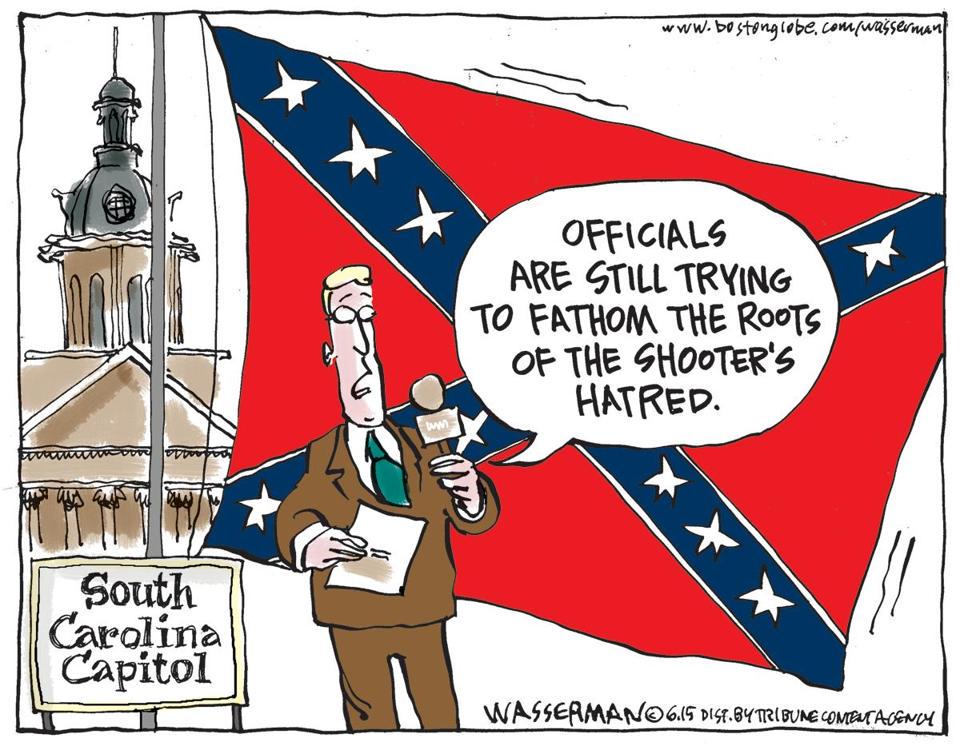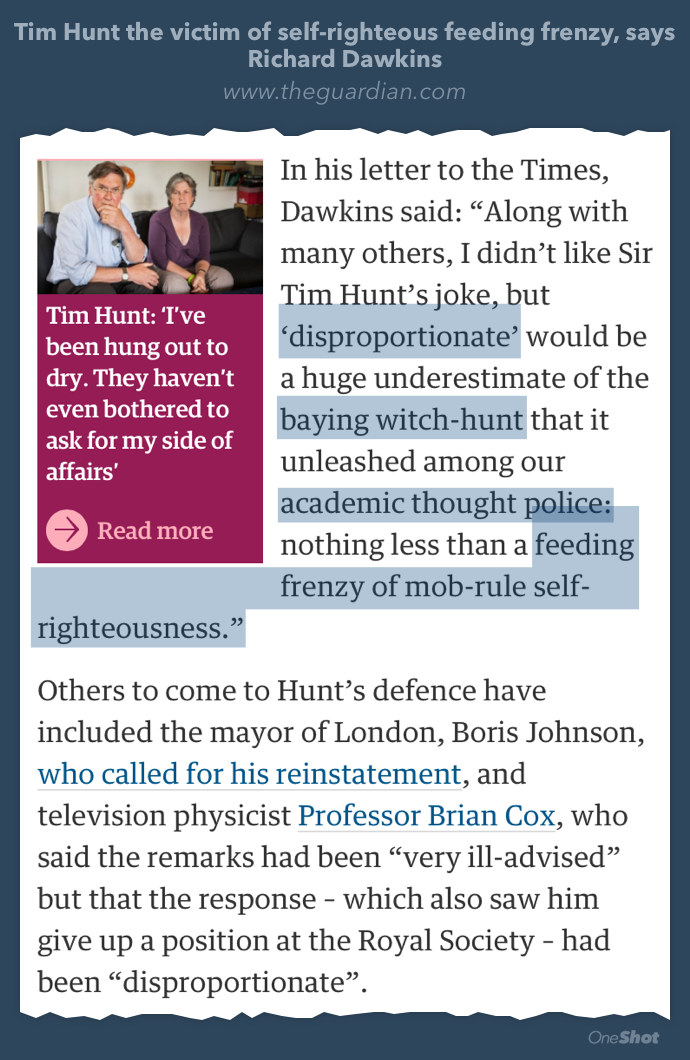More from the “can’t somebody make those women shut up?” campaign, via the ever-reactionary Telegraph.
Eight Nobel prizewinners have come to the defence of Sir Tim Hunt, the scientist at the centre of a sexism row following his comments on the “trouble with girls” in laboratories.
They warned of a chilling effect on academics’ freedom to speak their minds after Sir Tim was forced to resign his honorary post at University College London amid pressure from social media users.
UCL has said that social media users had nothing to do with it. The Telegraph doesn’t exactly say they did – “amid” is a very handy word for that purpose – but it certainly means the reader to get that impression.
And then, this “freedom to speak their minds” shit. Nobody needs academics to feel free to say things like “we don’t want any Pakis in our labs” or “black people can’t do science anyway” or “girls are a nuisance in our labs.” [Read more…]




